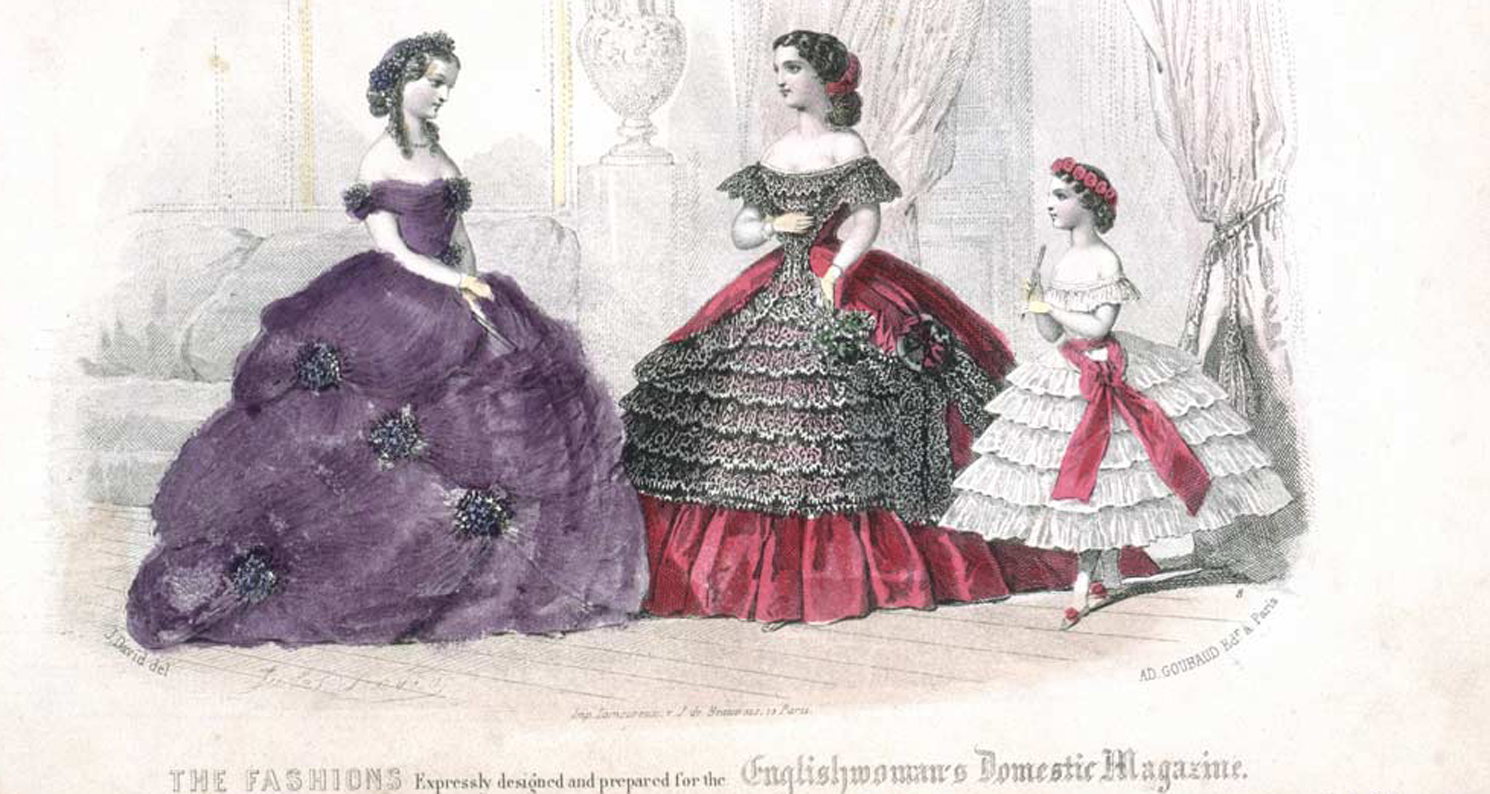
Fashion plate from Englishwoman’s Domestic Magazine, 1865. Victoria and Albert Museum.
• How an entire Spanish village came to be excommunicated—and how one lucky resident gets crowned Witch of the Year: “Trasmoz was a thriving community and powerful fiefdom, full of iron and silver mines and vast wood and water reserves. It was also lay territory, which meant it didn’t belong to the surrounding Catholic dominion of the Church, and by royal decree didn’t have to pay dues or taxes to the nearby monastery of Veruela—a fact that angered the Church. So when rumours of Trasmoz as a haven for witchcraft started to spread beyond the village boundaries, the abbot of Veruela seized his opportunity to punish the population, requesting that the archbishop of Tarazona, the biggest nearby town, excommunicate the entire village.” (BBC)
• How consumption (also known as tuberculosis) came to influence fashion and beauty of the Victorian era. (Smithsonian)
• Should children be allowed to buy poison? Another hot-button Victorian issue: “It wasn’t until the 1850s that there was any kind of control over the sale of poisons. Anybody, even a child, could go into a shop—a grocer’s shop, not even a chemist’s shop—and buy enough poison to kill dozens of people. And the reason for this was that poor people needed to have cheap medicine, cheap cleaning materials, they needed means of keeping down vermin, mice and rats. If all these things were strictly controlled, they wouldn’t be able to obtain them. That was the argument. It was not until well into the 20th century that there was, finally, control over things like weed killers and vermin killers.” (Pictorial)
• The nineteenth century’s panoramic prints and the itinerant artists who made them. (Atlas Obscura)
• Robots have been around for longer than we think: "The first-century-AD engineer Hero of Alexandria described lots of automata. Many involved elaborate networks of siphons that activated various actions as the water passed through them, especially figures of birds drinking, fluttering, and chirping." (Public Domain Review)
• Hate mail from famous authors. (The New Republic)